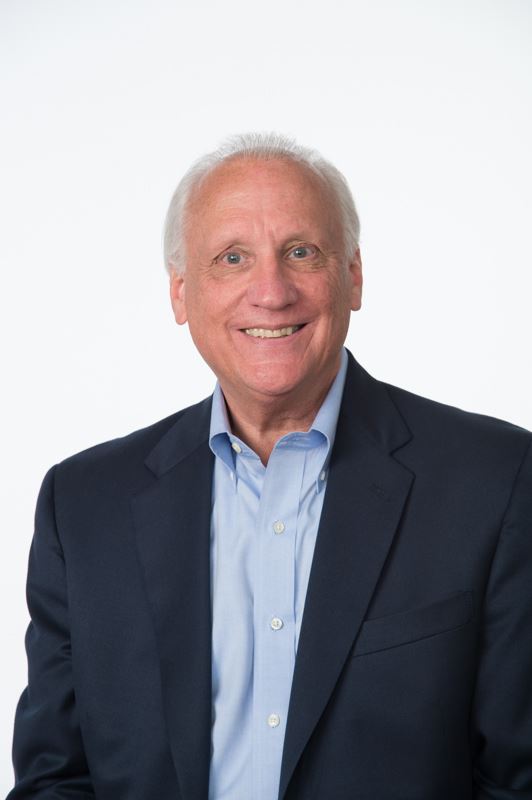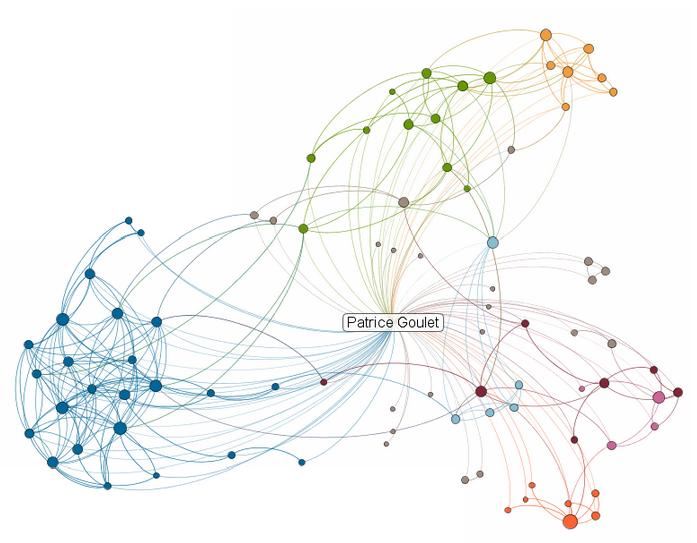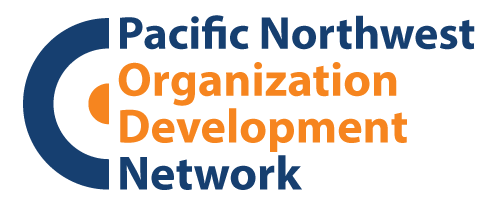Organizational Network Analysis - Putting the “Who” In Your “How” “How”
by Rick Bechtel
You've probably heard an organization referred to as a “beehive” of activity at one time or another. Usually, it's a way of depicting the amount of activity taking place. However, while that might seem like a bit of a tired cliché, it turns out to be a more complete metaphor to depict what goes on inside organizations day to day.
Just like a beehive, an organization is made up of many individuals who communicate and coordinate moment to moment, each with his or her specific functions and responsibilities. This collaborative effort constitutes an informal communication network.
The health and vitality of any organization hinges on the smooth day-to-day functioning of its informal network – its ability to carry out essential tasks while detecting and responding decisively to threats and opportunities. It is this network that maintains the organization's equilibrium, and through which its work gets carried out.
But here's the thing: Practically speaking, this vital informal communication network – this beehive – is invisible.
Think about that for a minute. A company’s informal network consists of not only its employees, but of the myriad conversations, phone calls, email exchanges and meetings that connect them over time. It is through these dynamics that work actually gets accomplished.
Yet leaders typically have no clear picture of those inner-workings. They can’t actually “see” the network – the invisible organization. And you cannot act upon what you cannot see.
Therein Lies The Dilemma
Shuffling boxes around on a formal organizational chart may give the illusion that you’re driving alignment and focus. But because these actions have no effect on the underlying informal networks, there remains a disconnect between strategic objectives and network configuration. That, in turn, breeds underperformance and anemic return on applied resources.
Historically, leaders lacked an appropriate lens through which to view how their corporate culture operated, much less to connect individual efforts and organizational action in order to drive performance.
Today, we do. It’s called Organizational Network Analysis (ONA).
A Powerful New Tool
ONA is a simple, straightforward process that visually maps the informal communication network. It reveals who connects with whom, how often, and in what ways. It shows you how your people are really organized, and how they actually go about their business. It reveals how the organization’s culture shapes, and is shaped by, the informal network.
For leaders, this is a tremendous eye opener. ONA helps them see what actually goes on inside the organization, diagnose issues & opportunities, and stimulate innovation and performance. It lets them see how much alignment is needed where, monitor critical points of value creation, and intervene selectively to give direction without disrupting normal operations.
ONA provides robust new methods for cultivating collaboration exactly where it’s needed, in measured and manageable ways. It helps leaders identify the network’s high performers – those critical individuals who connect important groups – and the outsiders whose influence or expertise may spell the difference between innovation and stagnation.
The process, itself, is simple. Each individual completes a questionnaire indicating with whom they communicate and how often. This may be preceded by informal interviews to pinpoint key influencers. The survey data is then analyzed by computer to produce a visual network map along with related statistics. Among other things, the map will identify who forms into groups with whom, who links groups together, who occupies other key network roles, who the isolates are, etc.
Here is a typical illustration of a network map:

The individual nodes (circles) can be identified by the names of the respective individuals. For more complex maps, it can be possible to zero in on a particular area by clicking on it, and thereby reveal more detail. A useful network map can be generated with as few as 50 employees, on up. The map can incorporate not only the internal network, but can, if desired, show key connections to important outside stakeholders (suppliers, etc.)
Armed with this output, leaders are able to identify where the network is working well and where adjustments are needed. These adjustments typically take the form of forging new connections or groups, trimming redundant connections, identifying the key players, and generally monitoring and guiding network functioning in other ways. It then becomes possible to measure outcomes to determine whether and where the adjustments are taking effect.
Thus far, ONA has been utilized primarily at the Fortune 500 level – though by a good number of companies there. But resources have begun to emerge that are making it in¬creasingly accessible to smaller and mid-sized organizations.
There are a variety of ways in which ONA can benefit any organization: For HR, in such areas as onboarding of new personnel, backstopping of key influencers and generally improving human relations within the organization; in operations, to create more productive working relationships and enhance performance and efficiency; or as a powerful tool to drive innovation and increase the success of change initiatives.
In sum, ONA gives leaders a real-time hands-on level of control over the actual functioning of the organization unlike anything they have ever experienced before. It also fosters higher employee morale by bringing corporate policies and practices more in line with the functioning of the natural, informal networks.
However applied in individual circumstances, organizational network analysis is gradually transforming the way that leaders approach their corporate culture and effectively manage their human resources.
Rick Bechtel MA, president of the Bechtel Consulting Group has over 25 years of experience in organizational dynamics working with clients in a variety of corporations as well as with nonprofit organizations. His current focus is on strategic and organizational development including organizational network analysis.
_____________________________________________________________
|

Increasing Your Dialogic OD Practice
with Gervase Bushe
All organizations grapple with change. It’s challenging to manage even when it is small-scale, specific, planned, and embraced by the organization. When it comes through unexpected disruption, and the organization faces the need for urgent, significant transformation in operations or culture, even the most experienced leader can feel overwhelmed by the complexity.
The Dialogic OD Laboratory will be an experiential, inquiry-based learning event. The Dialogic OD Laboratory will build on participants’ knowledge and/or experience with one or more dialogic methods (like Appreciative Inquiry, Open Space Technology, Dynamic Facilitation, Art of Convening). The lab will go beyond the techniques to explore the underlying change processes and frameworks required for successful application of any dialogic change process. For a preview of the workshop, be sure to visit our home page, www.pnodn.org and listen to the recording of the recent webinar.
SAVE THE DATES: October 21 and 22nd for the 2 day workshop in Seattle. Details will be in the next newsletter and on our website soon.
 June Monthly Meeting June 20, 2016 June Monthly Meeting June 20, 2016
Elemental Insight: Different by Design
Elemental Insight is a cutting edge approach to tackling issues of culture, change management, organizational design, teamwork, leadership effectiveness, and more. Adapted from Bert Hellinger’s Living Constellation work now used in over 25 countries, explore how things operate from an energetic perspective so individuals, teams and organizations can flourish and succeed.
Join Chris Richardson, CEO of Going Elemental for an Introduction to Elemental Insight. Experience how it all works, learn common OD applications and gain new insight about yourself in the process. Walk away understanding the conditions required to realize greater clarity, increase productivity, restore balance and create flow in any organizational system. Take part in this hands-on experience co-facilitated by Sarah Bicknell, an internationally recognized facilitator of Constellation work and the Elemental Insight tool.

_____________________________________________________________________________
Review of May's Meeting with Geoff Bellman
by Jeremy Meeds
During our May meeting, we were joined by one of OD's preeminent founding fathers, Geoff Bellman, who, besides writing several books in the field, including 'The Consultant's Calling', 'Getting Things Done When You are not in Charge' and 'Extraordinary Groups', has been practicing since 1968, first internally, followed by a career as an external consultant and founder of CCP. In a presentation entitled 'If I knew what I know now', Geoff led us through 5 categories of how he has changed as a consultant. He talked about his 1) Guiding Beliefs, 2) Doing the work, 3) Understanding Reality, 4) Succeeding and 5) Becoming myself through work.
He talked about how his guiding beliefs changed from "Having everyone get behind his plan" to "Let's all create this together", from "The action we do now will change this organization" to "There is nothing more important we can do than work together" and from "This will work, and soon" to "This might work! Let's see!"
He talked about how doing the work changed from "Finding out what's broken" to "I'm intrigued.. How does this place work", from "The client doesn't get it, they are the problem" to "The client is doing the best they can" and from "I know sooo much about this" to "I am fortunate to be here."
In terms of understanding reality, Geoff talked about how he changed from "Find out what is really happening" to "Be open to the many realities at work", from "Explain reality through a model that simplifies" to "Experience the complexity of this place" and from "Be clear, fast, right!" to "Be curious, start fresh, learn."
When talking about success, Geoff talked about how he changed from "Changing human systems in organizations" to "Engaging small teams alive with purpose", from "Designing work to use people's talents" to "Changing people's work and lives" and from "Succeeding and being recognized" to "Happy to know that I helped."
And finally, Geoff talked about becoming himself through his work. He talked about how he changed from "Point to my strengths and silent in my weaknesses" to "Acknowledge my strengths and weaknesses", from "Hide my flawed self" to "Accept my flawed self" and from "Presents more perfect self" to "Present a more human self."
Throughout all of this, Geoff displayed how he has grown in humility, wisdom, and therefore, in my words, brilliance. We all had the chance to have several one on one conversations throughout the night to talk about where we were at with all of these categories. Everyone seemed to be left very inspired and ready to take his wisdom forward with us as we move forward with our work in the world as OD practitioners.
.
| |
Case Study

Savy Slips, Learning on the Run
By Philip S. Heller
Learnings from Practice 18: Managing Resistance (Part 1)
How can you surface resistance to change in an authentic and experiential way?
The Request. The Training and Safety Manager of a State Department of Forestry asked for help in designing a half-day component of a conference that heralded the implementation of a new Geographical Information System (GIS). The conference sponsor, a GIS staff expert who reported to the Department Director wanted to help all 280 staff that collected geographical data (e.g., data on forests, wildlife, terrain, soil chemistry, recreation, etc.) to buy-into using a new centralized system.
Larger Context. Database management was occurring before anyone anticipated that a system-wide solution was needed. The department resource staff had always collected all sorts of data on the forest land that they managed. With the advent of desktop computing, measures and coding was being developed uniquely by different individuals throughout the state. For example, some staff were recording whole timber volumes, while others were recording the diameter at breast height (DBH). Storage was also varied with paper files, photos, mylar maps, digital databases and microfiche. Non-standard codes and the variety of storage formats create barriers to efficient information exchange. So, while the current system may have worked for individuals, with matixed teams, there were inconsistencies in the data that needed to be resolved, translations were required to a common format and standards needed to be reconfigured . Sometimes, the same data was being collected by different staff. Multiple reports for different geographical levels (forest stand, drainage area, ecosystem) required an extended lag time to update the data. Official inventories were not current and records were lost as individual staff left the department. The department was looking to create a set of consistent and common standards, definitions and formats. They wanted a GIS system in which the data could be entered once, updated as needed and used in different ways, by different people and by different applications, at different levels of analysis.
Consulting Intervention. We decide on a feedback and experimental approach to help staff discuss the system’s resistance to change and allow them, metaphorically, to experience the difference between the current and future systems. A self-assessment reaction sheet based on a theoretical definition of resistance was used to collect individual “resistance scores.” These were tallied across all participants and used as a basis for small group discussions about the current state of change the system was experiencing.(1) The following items that served as anchor points on a 7 point differential scale.
1. I have enough (very little) time to deal with the change to the new system.
2. I anticipate a number of (few, if any) negative results because of the new system.
3. I have a lot of (few) questions about the details of the new system.
4. I feel reluctant (comfortable) adopting the new system.
5. The new system is a practical (theoretical) and (not) a “real world” alternative.
6. I’m looking forward to (hesitant about) the possible work changes that the new system might create.
Last Line. One way to help develop system-wide understanding of large scale change and the natural resistance that accompanies it, is to use an assessment and feedback process.
Commentary: This is typical action research that is in accordance with our value for inquiry, while realizing that any conclusions drawn are socially constructed by the organizational members. We have used this process many times especially with data-oriented, technical professionals. Unlike in the past, we now have available Bluetooth-enabled hand-held devices that create instantaneous results that can be presented to the whole system.
(1) To access a slightly different question set, go to: http://learningdesigna.com/resourcescategory/change-management/ and select Resistance Reaction Sheet.
Philip Heller is a senior associate of Learning Design Associates. For 36 years he has helped plan systems change and develop leaders in government, community agencies, and health care centers. Philip received his Ph.D. in Education focusing on learning and problem solving. As part of the originating group, he has been a PNODN member since 1982.
© 2016 Philip S. Heller, Savy Slips, Learning on the Run 18 Part 1. Surfacing Resistance
|
|
|
|
Of Interest
 Wine Down Wednesday - Wine Down Wednesday -
Join SHRM Seattle for an opportunity to enjoy wine, light appetizers, and networking with your HR peers at a great new venue for this event!
DATE: Wednesday, July 27, 2016
TIME: 4:30 PM - 7:00 PM
LOCATION: Frol!k - Motif Seattle
1415 Fifth Avenue
Seattle, WA 98101
Cost: $20 for Seattle SHRM Members
$30 for Non-Members
ATDps presents: Learnapalooza 2.0 
Back by popular demand and expanded to a day-long workshop is the learning fair we dubbed "Learnapalooza" – it’s like summer camp for learning professionals! Using the open space format, this is a chance to network, sample a smorgasbord of topics relevant to today's learning professional: virtual reality technology, micro-learning and e-learning best practices, diversity & inclusion issues, better content curation, learning ecosystems, coaching, informal learning, future workforce issues, and more in rapid, immersive experiences. For a full list of presenters, see the event page on the ATDps website.
Then, the afternoon will allow participants a chance to dive into many of the morning topics through longer workshops. Framing all of this we'll take a look at the state of the industry -- where we've been, where we are now, and where we want to be. Along with unpacking some of the myths around learning. Parking is free and light breakfast and lunch are included in your registration fee. Help us spread the word – these events are for you and made better by a diverse group of folks showing up! Looking forward to learning with you all.
- When: 24 Jun 2016 9:00 AM - 3:30 PM
- Location: Coast Hotel Bellevue, 625 116th Avenue NE, Bellevue, WA 98004
- Registration includes light breakfast, lunch and the venue has ample free parking
|
HOW TO REACH US

The Editor of the newsletter is David C. Wigglesworth
Our Administrator is: Ann M. Baus
From The Editor
This is your newsletter and we welcome and encourage your contributions. They could include personal news of a professional achievement, a brief article of interest, a short book review, a case study, a cartoon, a joke that is OD relevant and/or anything else that might be of interest to your colleagues who are our readers. I thank you in advance.
|
|
|
|



